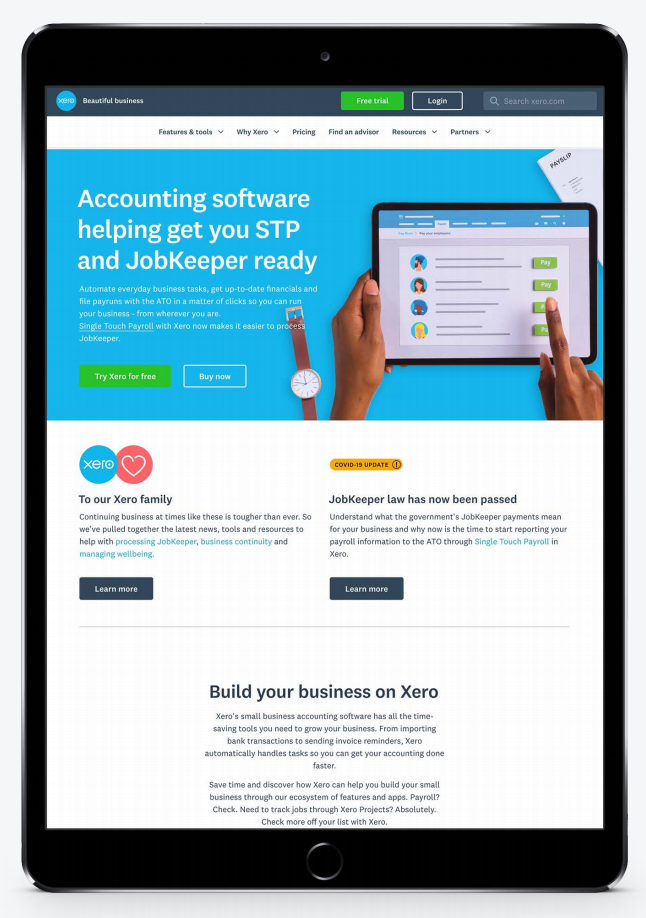Gaining traction in the North American market has been the holy grail for Xero for most of the last decade and it still looks far away in the distance.
And Xero still looks like a gnat next to its major competitor, Intuit, whose desktop software QuickBooks dominated in the US when Xero's cloud-based software began to disrupt the market.
It didn't help that, in about 2014, Xero departed from its tried-and-true strategy everywhere else in the world of targeting accountants and bookkeepers and gaining new subscribers through them and tried to go direct to its small business target market.
At the time, Xero's founder and then managing director Rod Drury publicly criticised accountants in the US for lacking tech-savvy and being years behind accountants in Xero's home markets of Australia and New Zealand.
Chief financial officer Kirsty Godfrey-Billy spoke to the New Zealand Shareholders' Association members last week and said the direct-to-customer route had proved to be "pretty cost intensive" and resulted in much higher churn rates than Xero had been used to from working through accountants.
"A few years ago, we did a thorough review of the US business and questioned why we had moved away from relationships that we had held so dearly and had success with around the globe."
Re-establishing relationships
Now, after working to re-establish those relationships, Xero has accountants on board in the US with about 1.5 million small businesses as clients who could potentially become Xero subscribers.
The company's latest achievement was to sign up MNP, a major accounting firm in Canada which counts about 150,000 small businesses as clients.
Godfrey-Billy pointed to Xero's net gain of 26,000 subscribers in North America in the six months ended March, a record for the second half, as an indication her company is starting to gain traction.
In each of the previous nine years, barring the customers Xero gained in through the Hubdoc acquisition during the September 2019 period, net new North American subscribers averaged less than 17,000.
"It's not masses and masses, particularly if you compare it to the 1.5 million businesses that are sitting behind the accountants and bookkeepers" that Xero has relationships with, or the 10 million small businesses in the region that use accounts and bookkeepers, or the more than 30 million small businesses in the US, "but it's a step in the right direction," she said.
As for the gnat versus elephant comparison, Intuit used to publish its subscriber numbers every quarter but no longer. That in itself could be a sign that Xero is finally gaining ground on Intuit's home turf, but it is clearly streets away from catching up.
North American subscribers
Xero had 241,000 North American subscribers at March 31, up from 195,000 a year earlier, compared with Intuit's latest reported numbers at July 31 last year of 3.3 million QuickBooks subscribers in the US and another 315,000 in Canada.
While Australasian competitor MYOB and British incumbent Sage were caught napping when Xero burst onto the scene and quickly became market leader in those markets, Intuit was much quicker to fight back.
But those numbers show that the combined subscribers to either QuickBooks or Xero leave a much larger pool of potential subscribers untapped as yet – they have reached perhaps 15 percent of their addressable market.
New Zealand is Xero's most developed market with 392,000 subscribers, or about 70 percent of small businesses operating in this country, pointing to the size of the opportunity elsewhere.
Another straw in the wind could be the price differential Xero has maintained in North America.
Citi analysts noted in their report on Xero's latest results last month that "Xero has historically refrained from offering discounts on its plans in the US. Intuit – QuickBooks – on the other hand, offers a discount of 50 percent to 70 percent on list price."
Xero's standard plan has been unchanged at US$30 a month since May last year while QuickBooks' price rose from US$20 a month to US$21 in March this year, Citi said.
Coy on discounting
Xero wouldn't confirm that it doesn't discount in the US: "Like any SaaS – software as a service – business, trials, up front discounts and promotions are an integral part of Xero's customer acquisition strategy. We do or have used all of these customer acquisition strategies in all our regions at different times."
One of the Citi analysts, Siraj Ahmed said it's true that Xero does have a few promotions now and then, but that one consequence of working through accountants is that the cost of Xero is just part of the total price the accountants charge.
"The cost of accounting software is probably a small part of what the accountants charge."
Xero has always argued that small businesses aren't very price-sensitive when it comes to accounting software.
Being considerably more expensive than its competitors hasn't stopped Xero from being the largest player in the NZ, Australian and British markets – Intuit recently took over as having the most subscribers in Britain by number, but not by value.
The Citi report puts its standard price in Australia at A$50 a month compared with MYOB Essentials' price of A$24 and, in Britain, its £24 a month price compares with £8 for QuickBooks and £7 for Sage's competing product.
A measure of the competitiveness of the British market is that pre-covid-19, Xero had planned a $2 a month price rise in all markets exception Britain from mid-March. Because of the coronavirus crisis, that price hike has been postponed to July and Ahmed said there's a risk it will be further delayed.














